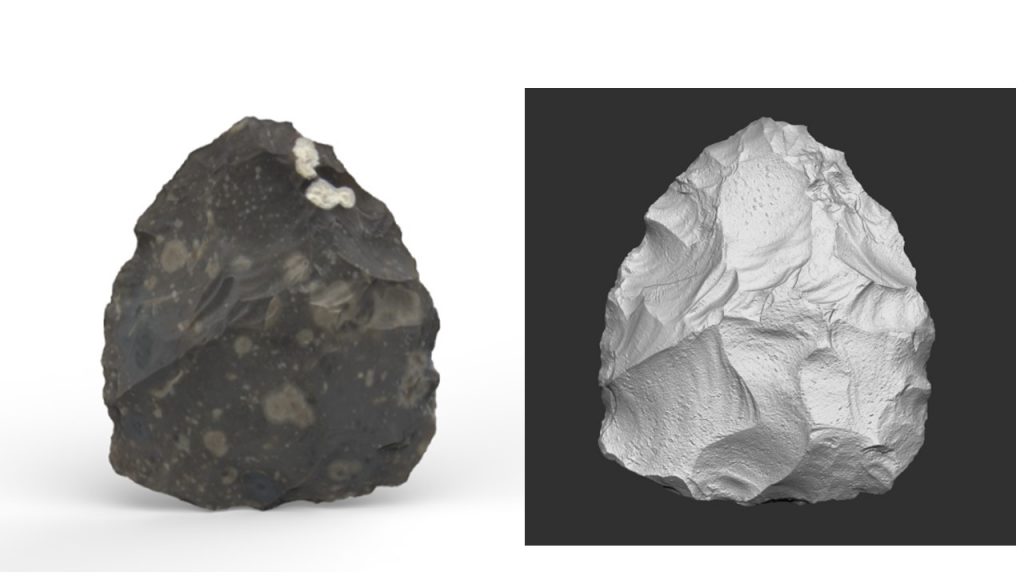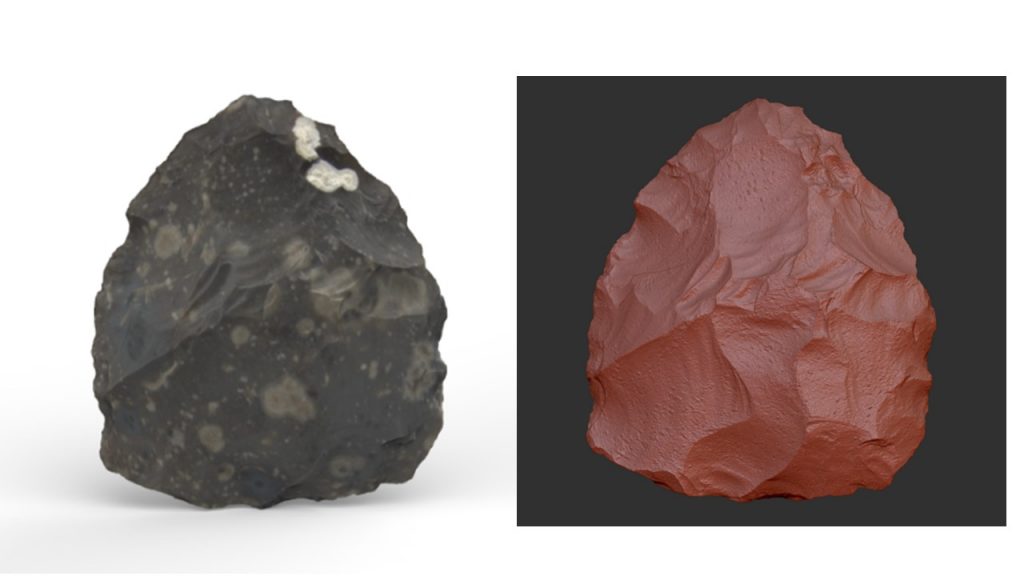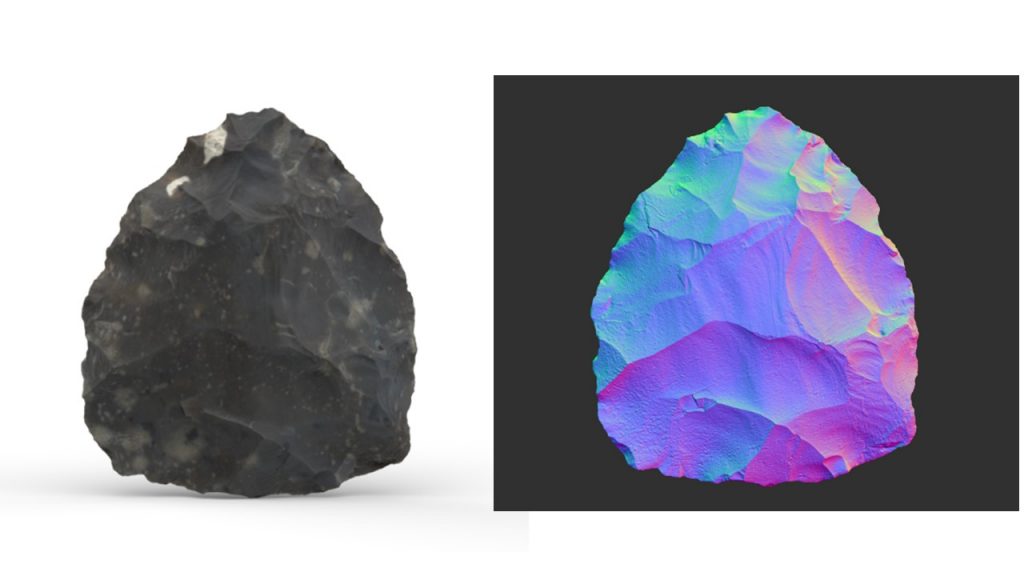
Above is a photograph of the protective equipment I use. Starting from the left, gloves. I do not use gloves myself as I find they inhibit fine motor movement, but for workshops I always offer the option of using gloves for participants.
Next up is the First Aid Kit. I do not use gloves and I get plenty of small cuts on my hands. Consequently, plasters, bandages and bandage tape are the main consumables I use. There is also a great product called ‘Fingerbobs‘ specifically for protecting fingers after being cut. They are excellent and highly recommended.
Third on the list is protective eye equipment. I use glasses as I have reached an age where I need them to see detail, so glasses both protect my eyes from flying flint, and also allow me to see where I am hitting. The goggles are again for workshop participants who do not wear glasses but do absolutely need eye protection.
Finally, some carpet samples that rests on the thigh and are useful for both pressure flaking plus hard and soft hammer work. I am getting more and more used to knapping whilst standing up, and that is interesting in that it limits the size of materials that can be handled and worked (as in the past?). However, in a teaching and learning environment we are generally seated and the carpet is ideal thigh protection.
General guidance for participants on workshops before they arrive is to wear trousers and boots, especially when handling large nodules, but that is about it. I am a trained First Aider for work and fortunately, using the above protective equipment, the worst I have had to deal with is cuts to hands. Happy days!



